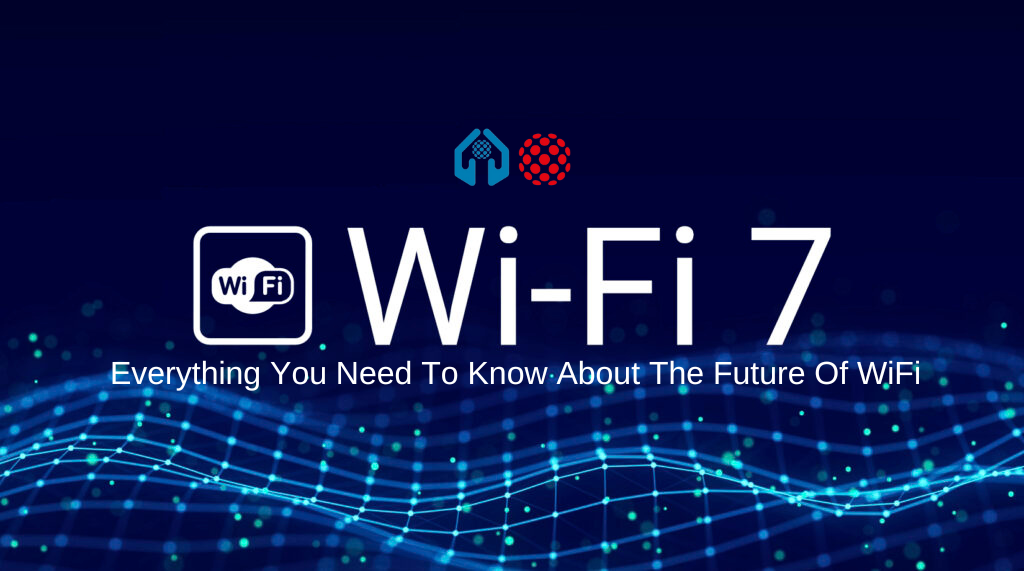In modern technological advancement, there exists a fundamental innovation that often operates silently in the background: Wi-Fi. It’s the force that seamlessly transforms cafes into workspaces, parks into virtual classrooms, and homes into centres of connectivity, all without the encumbrance of physical wires. Yet, have you ever contemplated the mechanics of this seemingly magical connection? How does data traverse the ethereal expanse of the airwaves to instantaneously grace our devices?
In this post embark on a journey to unveil the intricate mechanisms that underpin the world of Wi-Fi. Our mission is to demystify the science, decipher the technical terminology, and illuminate the concealed infrastructure that fuels our interwoven digital lives. Whether you’re a fervent technology aficionado, an occasional user, or simply harbour a curious inclination, prepare to embark on a guided exploration into the realm of Wi-Fi.
If you are on the lookout for a broadband provider in a rural area then getting in touch with us will be the first step for you. Get in touch with notspotbroadband.com today.
1. Understanding Wireless Communication
Wireless communication, the foundation of technologies like Wi-Fi, facilitates data exchange without physical connections. It relies on radio waves, electromagnetic signals that transmit information through variations in frequency and amplitude. These waves act as carriers for data, resembling invisible ripples in the air.
Frequency and wavelength define radio waves. Frequency (measured in Hz) signifies wave cycles per second, while wavelength denotes crest-to-crest distance. Modulation encodes data onto radio waves by altering amplitude, frequency, or phase. This process transforms digital data into analog signals for wireless transmission.
Demodulation at the receiver’s end extracts encoded data from radio waves, converting analog signals back to digital form. Antennas, serving as transmitters and receivers, convert electrical signals into radio waves, optimizing signal propagation.
While radio waves encounter obstacles and interference, they’re the conduits of data through air, water, and materials. Multiplexing techniques enable multiple signals to share a frequency band.
Understanding wireless communication is key to comprehending Wi-Fi’s mechanics. It’s the intricate interplay of radio waves, modulation, and demodulation that seamlessly fuels our digitally connected world.
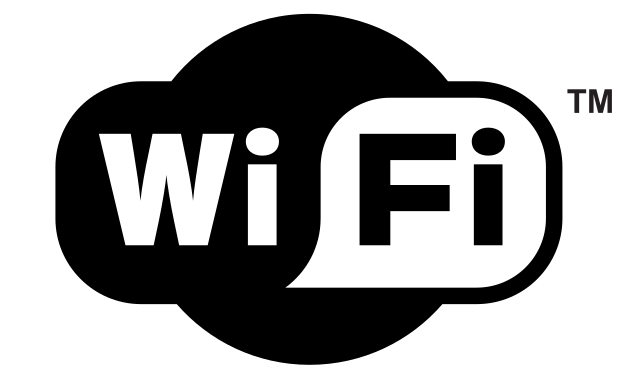

2. Components of Wi-Fi: Transmitters and Receivers
Wi-Fi, the technology that liberates us from wired connections, operates through two primary components: transmitters and receivers. These elements play pivotal roles in the seamless exchange of data across wireless networks.
Transmitters: At the Heart of Connectivity
Transmitters, often housed within Wi-Fi routers, are the catalysts that propel data into the wireless realm. They convert digital information into radio waves, which then traverse the air to reach connected devices. These radio waves, meticulously modulated with the encoded data, form the invisible threads of wireless communication. Transmitters are equipped with antennas that help propagate these signals in specific directions, ensuring efficient coverage of intended areas.
Receivers: Decoding the Invisible
On the flip side, receivers, present within our laptops, smartphones, and other Wi-Fi-enabled devices, await the arrival of these modulated radio waves. Once the encoded waves are captured by the device’s antenna, receivers adeptly demodulate them. This process, akin to deciphering a secret code, transforms the analog signals back into the original digital data, making it intelligible and usable for the device. Thus, receivers transform the invisible waves into meaningful messages, applications, and content.
Together, these components orchestrate the symphony of wireless communication that empowers our digital lives. Transmitters emit encoded radio waves that travel through space, and receivers expertly decode these waves, converting them into the familiar data we interact with daily. This duet of transmitters and receivers forms the backbone of Wi-Fi, elevating our connectivity to new heights of convenience and freedom.
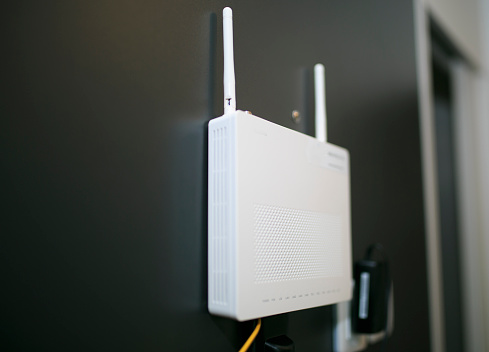

3. Radio Frequencies and Channels
In the world of Wi-Fi, radio frequencies and channels are the conductors of wireless communication. They define how our devices seamlessly connect and interact.
Radio Frequencies:
Wi-Fi operates in the 2.4 GHz and 5 GHz bands, each with distinct benefits. The 2.4 GHz band offers broader coverage, while the 5 GHz band provides faster speeds and less interference.
Channels:
Channels divide the spectrum within each frequency band, creating virtual pathways for data transmission. They enable multiple devices to communicate without disruption, though overlapping or excessive use can cause congestion.
Channel Width:
Channel width balances speed and congestion. Wider channels mean faster data transfer, but they can lead to congestion. Finding the right balance is crucial.
Coexistence and Interference:
Close Wi-Fi networks can interfere with each other, impacting signal quality. Proper channel selection and spacing help avoid this, improving network performance.
Automatic Channel Selection:
Modern routers often have automatic channel selection, picking the least congested channel dynamically for optimal performance.
Understanding the interplay between radio frequencies and channels enhances Wi-Fi’s performance. By making informed choices about channels and widths, users can elevate their wireless connectivity experience.
4. Modulation and Data Encoding
Modulation and Data Encoding in Wi-Fi
At the heart of Wi-Fi’s magical connectivity lies the intricate dance of modulation and data encoding. These processes transform digital information into ethereal signals that traverse the airwaves, enabling seamless communication between devices.
Modulation: Transforming Data into Waves
Modulation is the art of imbuing data with a physical form – radio waves. It’s a process of altering the characteristics of a carrier wave, such as amplitude, frequency, or phase, to represent the binary data (0s and 1s). This transformation turns digital information into a tangible form that can travel through the air.
Data Encoding: Shaping the Message
Data encoding is the systematic arrangement of data bits into patterns that modulation can easily represent. Various encoding schemes, like Manchester encoding or quadrature amplitude modulation (QAM), shape the data stream into wave-friendly forms, ensuring accurate transmission and reception.
Demodulation: Reversing the Transformation
On the receiving end, demodulation performs the reverse transformation. It extracts the encoded data from the modulated carrier wave, reverting the analog signals back into the original digital format.
Error Detection and Correction: Ensuring Accuracy
During modulation and demodulation, errors can occur due to interference or signal degradation. To ensure accuracy, error detection and correction techniques are applied. These mechanisms identify and rectify errors, ensuring the received data matches the transmitted data.
Modulation and data encoding are the artisans of wireless communication, shaping data into signals that traverse space. They allow us to share messages, images, and videos across the airwaves, bridging the physical divide with digital magic. As we send emails, stream music, and video call loved ones, remember the choreography of modulation and encoding that makes it all possible.
5. SSIDs and Network Identification
In the intricate web of Wi-Fi connectivity, SSIDs and network identification serve as the gateways to wireless access, allowing devices to seamlessly connect and communicate.
SSID: The Network’s Calling Card
SSID, or Service Set Identifier, is the unique name assigned to a wireless network. Think of it as the network’s distinctive calling card. Devices use SSIDs to identify and distinguish between different networks, ensuring they connect to the right one.
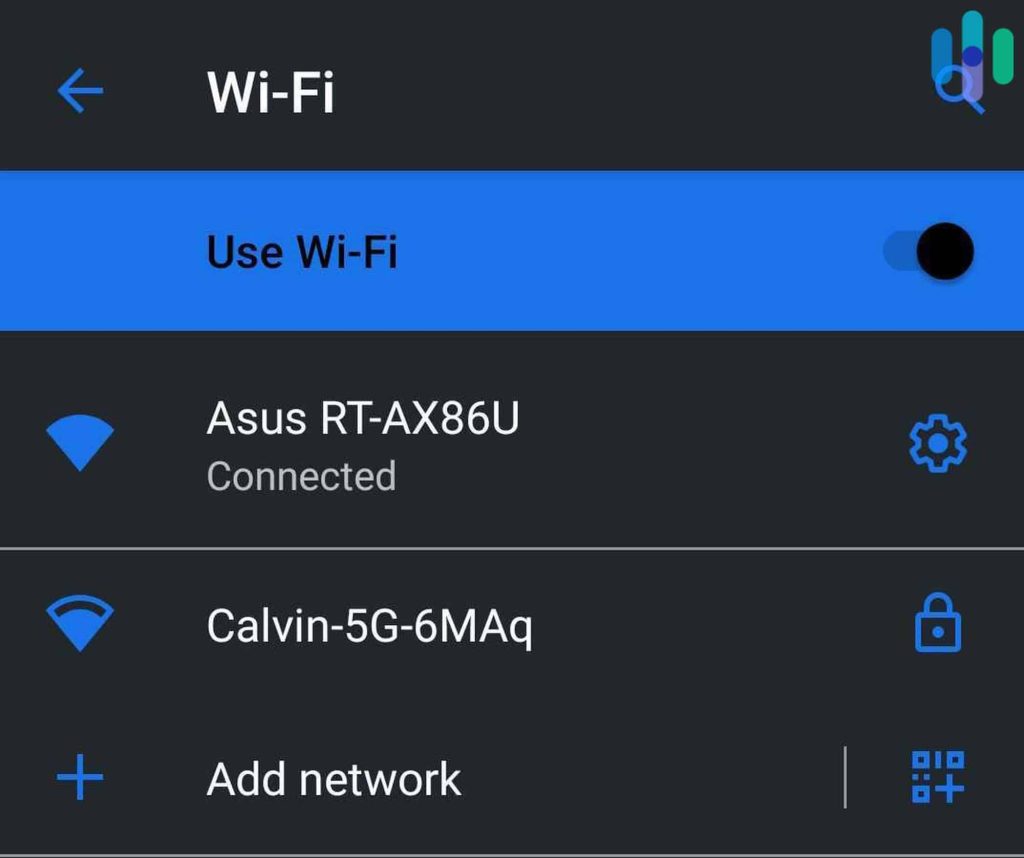

Network Identification: Making Connections
When your device scans for available Wi-Fi networks, it’s essentially searching for SSIDs. Each SSID corresponds to a particular wireless network, whether it’s your home Wi-Fi, a coffee shop hotspot, or a corporate network.
Hidden SSIDs: Concealing Networks
While most networks openly broadcast their SSIDs for devices to connect to, some networks can be configured to hide their SSIDs. This adds an extra layer of security, as the network won’t appear in the list of available networks during a scan. Devices can still connect if they know the hidden SSID and its security credentials.
Multiple SSIDs: Networks within Networks
Advanced routers often support multiple SSIDs, creating separate virtual networks within the physical network. This is useful for segregating traffic or providing guest access while maintaining the primary network’s security.
Conclusion: Identity in the Wireless Realm
In the vast expanse of wireless communication, SSIDs and network identification are the digital addresses that guide our devices. They facilitate connections, enabling us to access information, stay connected, and interact with the virtual world. Next time you connect to a Wi-Fi network, remember that behind the familiar name lies an intricate system of SSIDs that open the doors to boundless digital exploration.
6. Authentication and Encryption
Beneath the surface of seamless Wi-Fi connectivity, authentication and encryption stand as the sentinels guarding our digital interactions. These twin pillars ensure that our wireless communication remains secure and private.
Authentication: Establishing Trust
Authentication is the process by which devices verify their identity to the network. When you connect to a Wi-Fi network, your device and the network engage in a handshake to confirm each other’s legitimacy. This prevents unauthorized devices from accessing the network.
Encryption: Safeguarding Data
Encryption transforms your data into an unreadable format during transmission. This ensures that even if someone intercepts the data, they can’t decipher it without the encryption key. Modern Wi-Fi networks often employ WPA3 encryption, enhancing security compared to its predecessor, WPA2.
Security Protocols: WPA and WPA2/WPA3
Wi-Fi networks rely on security protocols like WPA (Wi-Fi Protected Access) and WPA2/WPA3 to ensure robust authentication and encryption. These protocols dictate how devices connect and how data is secured during transmission.
Pre-shared Key (PSK) and Passphrases: Unlocking the Network
When you connect to a Wi-Fi network, you often enter a password or passphrase. This Pre-shared Key (PSK) acts as the decryption key, allowing your device to unlock and understand the encrypted data.
Public Wi-Fi and Risks: Exercise Caution
Public Wi-Fi networks, such as those in cafes or airports, often require minimal authentication. This convenience comes with risks, as these networks can be vulnerable to hacking and eavesdropping. Using a Virtual Private Network (VPN) adds an extra layer of security by encrypting your entire internet connection.
Authentication and encryption are the guardians of our digital sanctuaries in the wireless world. They stand vigilant, ensuring that our sensitive information remains confidential and our interactions secure. Every time you connect to a Wi-Fi network, remember that these unseen protectors are working tirelessly to shield your data from prying eyes and maintain the integrity of your digital experience.
7. Data Transmission: The Dance of Packets
Behind the scenes of seamless internet browsing and video streaming, a choreography of data transmission unfolds – a captivating dance of packets that powers our Wi-Fi connectivity.
Packets: The Units of Communication
Data is divided into small units called packets. These packets contain chunks of information, including the sender’s and recipient’s addresses, the data itself, and error-checking information.
Breaking Down and Routing: Navigating the Network
When you send an email, for instance, your email’s text, attachments, and other elements are divided into packets. These packets embark on their journey through the network, hopping between routers and switches based on the optimal path.
Acknowledgement and Resending: Ensuring Reliability
Upon reaching their destination, each packet is acknowledged. If a packet is lost or corrupted during transmission, it’s resent to maintain data integrity. This process ensures that your emails, files, and messages arrive intact.
Efficiency and Order: Sequence Numbers
Packets often take different routes through the network and might arrive out of order. To reconstruct the original data, packets are given sequence numbers. Your device then reorders them according to these numbers.
Quality of Service (QoS): Prioritizing Traffic
In a bustling network, some data is more time-sensitive than others. Video calls, for example, need smoother transmission than email attachments. Quality of Service (QoS) mechanisms prioritize time-sensitive packets to ensure seamless experiences.
8. Signal Strength and Range
In the realm of wireless connectivity, signal strength and range dictate the reach and quality of our Wi-Fi connections. Understanding these factors unveils the dynamics that determine the effectiveness of our wireless networks.
Signal Strength: The Power of Transmission
Signal strength measures the intensity of the Wi-Fi signal between your device and the router. A stronger signal ensures a more reliable and faster connection. Factors like distance, obstacles, and interference can affect signal strength.
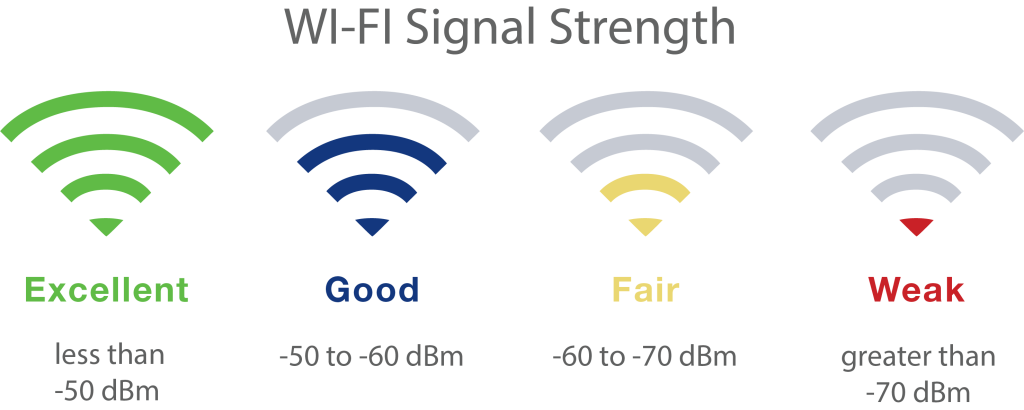

Range: The Reach of Connectivity
Range refers to the distance over which a Wi-Fi signal can effectively transmit data. As you move away from the router, signal strength diminishes, impacting connection quality. Routers with higher power output can extend range, but it’s also essential to consider interference and obstructions.
Obstacles and Interference: Challenges to Signal Propagation
Physical obstacles such as walls and floors, as well as electronic devices like microwaves and cordless phones, can obstruct or interfere with Wi-Fi signals. Understanding these obstacles and minimizing their impact is crucial for maintaining signal strength and range.
Boosting Signal: Extenders and Mesh Networks
To extend Wi-Fi coverage, you can use signal boosters or Wi-Fi range extenders. Mesh networks, comprising multiple access points, offer seamless coverage in larger areas by intelligently routing data through the strongest connection.
Positioning Routers: Optimal Placement
The router’s placement greatly influences signal propagation. Positioning it centrally and elevating it can optimize coverage. Additionally, adjusting antennas’ orientation can fine-tune signal distribution.
9. Dual-Band and Tri-Band Wi-Fi
In the intricate web of wireless connectivity, dual-band and tri-band Wi-Fi emerge as beacons of versatility, each harnessing distinct frequency bands to optimize performance. Unveiling the world of these multi-frequency solutions allows us to make informed choices for seamless connectivity.
Dual-Band Wi-Fi: Balancing Frequencies
Dual-band Wi-Fi operates on two distinct frequency bands: 2.4 GHz and 5 GHz. The 2.4 GHz band offers wider coverage, making it suitable for larger areas, but can experience congestion due to its popularity. The 5 GHz band, on the other hand, provides faster speeds and encounters less interference.
Tri-Band Wi-Fi: Adding a Frequency Layer
Tri-band Wi-Fi takes versatility a step further by operating on three frequency bands: one 2.4 GHz and two 5 GHz bands. This extra frequency layer aims to alleviate congestion, especially in crowded environments, by distributing devices across multiple bands.
Utilizing Bands for Devices: Optimal Distribution
Devices that support both 2.4 GHz and 5 GHz bands can automatically connect to the appropriate band based on their capabilities and the network’s congestion. Optimizing band distribution helps maintain a stable connection and reduces congestion.
Smart Connect: Band Management
Some routers offer a feature called “Smart Connect,” which automatically assigns devices to the most suitable band based on their capabilities and the network’s load. This dynamic band management optimizes performance for all connected devices.
10. Wi-Fi Standards and Evolution
In the ever-evolving landscape of wireless connectivity, Wi-Fi standards emerge as the architects of progress, ushering in new levels of speed, efficiency, and capabilities. Delving into the world of Wi-Fi standards unveils the intricate tapestry that connects generations of technology.
Wi-Fi Standards: From 802.11 to 802.11ax
Wi-Fi standards are categorized under the IEEE 802.11 family. Each standard represents a generation of technology, marked by an alphabet appended to the number (e.g., 802.11n, 802.11ac, 802.11ax). These standards dictate data transfer rates, frequency bands, and features.
Evolution of Speed: A Glimpse Through the Generations
The evolution of Wi-Fi is a journey of increasing speed. 802.11b, introduced in the late 1990s, supported up to 11 Mbps. Subsequent standards saw significant improvements: 802.11g reached 54 Mbps, 802.11n offered up to 600 Mbps, 802.11ac boasted gigabit speeds, and 802.11ax (Wi-Fi 6) catapulted speeds to multi-gigabit levels.
Efficiency and Range: Beyond Speed
While speed is a hallmark of Wi-Fi evolution, standards also focus on efficiency and range. Advanced modulation techniques, wider channels, and enhanced beamforming improve data transfer and coverage, ensuring reliable connections even at a distance.
MIMO and MU-MIMO: Enabling Simultaneous Communication
Multiple Input Multiple Output (MIMO) and Multi-User MIMO (MU-MIMO) are technologies that enable routers to communicate with multiple devices simultaneously. MU-MIMO takes this a step further by allowing routers to talk to multiple devices on different streams, enhancing efficiency in crowded networks.
Wi-Fi 6E: Embracing a New Spectrum
The latest addition to the family is Wi-Fi 6E, which leverages the newly opened 6 GHz spectrum for even faster and less congested connections. This evolution opens the door to enhanced performance, especially in environments with dense device populations.
11. Challenges and Solutions
In the dynamic landscape of wireless connectivity, challenges often arise, testing the resilience of our Wi-Fi networks. Unraveling these challenges and their corresponding solutions empowers us to navigate the digital realm with confidence and adaptability.
Congestion: Navigating the Data Highway
As more devices connect to Wi-Fi networks, congestion becomes a common challenge. The sheer volume of data can lead to slowdowns and reduced performance. To address this, routers equipped with Quality of Service (QoS) mechanisms prioritize time-sensitive data, ensuring smooth experiences for activities like video streaming and online gaming.
Interference: Overcoming Signal Intrusions
Interference from neighboring Wi-Fi networks, electronic devices, or physical obstacles can weaken signal strength and disrupt connections. To mitigate interference, opting for less crowded Wi-Fi channels, using dual-band or tri-band routers, and positioning routers away from potential sources of interference can enhance performance.
Security Concerns: Safeguarding Digital Sanctuaries
Securing Wi-Fi networks against cyber threats is crucial. Weak passwords, outdated encryption protocols, and open networks are vulnerabilities that hackers can exploit. Employing strong passwords, regularly updating router firmware, and using modern security protocols like WPA3 add layers of protection.
Dead Zones: Extending the Reach
Areas with weak or no Wi-Fi coverage, often referred to as dead zones, can be frustrating. Wi-Fi range extenders, powerline adapters, and mesh networks are solutions that help extend coverage to these tricky spots, ensuring seamless connectivity throughout your space.
Device Compatibility: Bridging the Gap
As technology advances, older devices might struggle to connect to newer Wi-Fi standards. To bridge this gap, routers with backward compatibility support can ensure that both old and new devices can connect and communicate effectively.
12. Wi-Fi 6E and Beyond
In the realm of wireless technology, the emergence of Wi-Fi 6E marks a pivotal step toward enhanced connectivity, setting the stage for an exciting future. Exploring Wi-Fi 6E and its potential beyond unveils the trajectory of wireless evolution.
Wi-Fi 6E: The 6 GHz Revolution
Wi-Fi 6E harnesses the untapped potential of the 6 GHz frequency spectrum. This expansion opens up a vast playground for data transmission, reducing congestion and enabling faster speeds, lower latency, and improved network performance.
Improved Speed and Capacity: Turbocharging Data Transfer
Wi-Fi 6E’s wider channels and higher data rates propel wireless speeds to new heights. This evolution accommodates the growing demands of data-intensive applications like 4K and 8K streaming, virtual reality, and augmented reality.
Reduced Congestion: Breathing Room for Networks
By utilizing the 6 GHz spectrum, Wi-Fi 6E alleviates congestion on existing 2.4 GHz and 5 GHz bands. This not only enhances network efficiency but also ensures a smoother experience in crowded environments with numerous devices.
Enhanced Device Capabilities: More Devices, Less Interference
Wi-Fi 6E supports larger numbers of devices simultaneously, thanks to the expanded frequency range. This advancement reduces interference and enables seamless coexistence of numerous devices on the same network.
Beyond Wi-Fi 6E: Imagining the Future
As technology advances, the landscape of wireless communication extends beyond Wi-Fi 6E. Innovations like Li-Fi (using light for data transmission) and the exploration of even higher frequency bands hold promise for unprecedented speeds, lower latency, and revolutionary applications.
Conclusion: Navigating the Invisible Threads
Wi-Fi’s enchanting dance of technology orchestrates our modern lives, transcending physical limits. Our journey through its inner workings has unveiled the intricate mechanisms knitting our digital world together.
From radio waves’ graceful ballet to the harmonizing of transmitters and receivers, we’ve grasped the symphony beneath our connections. Understanding modulation, encryption, and Wi-Fi’s evolution illuminates the thought behind each message and download.
In facing challenges and solutions, in welcoming Wi-Fi 6E and beyond, we step into a realm where science and convenience intertwine. As parks turn into classrooms and cafés into offices, Wi-Fi’s magic transforms how we connect, learn, and work.
With this knowledge, we embrace our roles as informed users and marvel at Wi-Fi’s power. So, let’s continue surfing these waves, guided by the technology that turns data into memories, as we navigate the ever-changing sea of connectivity.
-
Event WiFi: Tips for a Seamless Connection
In today’s interconnected world, a reliable Event WiFi and connection is the backbone of successful events, powering everything from attendee engagement to vendor transactions. Whether you’re orchestrating a corporate summit or hosting a music festival, ensuring robust WiFi coverage is paramount. In this guide, we’ll delve into strategies to help you conquer the challenges of…
-
Empowering Rural Connectivity: The Promise of Fixed Wireless Access (FWA)
Empowering Rural Connectivity: The Promise of Fixed Wireless Access (FWA) What is Fixed Wireless Access/ Internet? Fixed Wireless Internet refers to a type of high-speed internet access that utilises radio signals, typically transmitted through radio towers/ masts or antennas, to provide connectivity to a fixed location, such as homes or businesses. Unlike mobile wireless connections,…
-
WiFi 7: Everything you need to know about the future of WiFi!
What Is WiFi 7?: Wi-Fi 7 operates in the 6GHz spectrum, catapulting internet speeds to new heights. When is it Available?: Released on January 8, 2024, by the Wi-Fi Alliance, this cutting-edge technology is now available in the US, UK, Australia, Japan, and Mexico. However, regulatory approval is still pending in…


